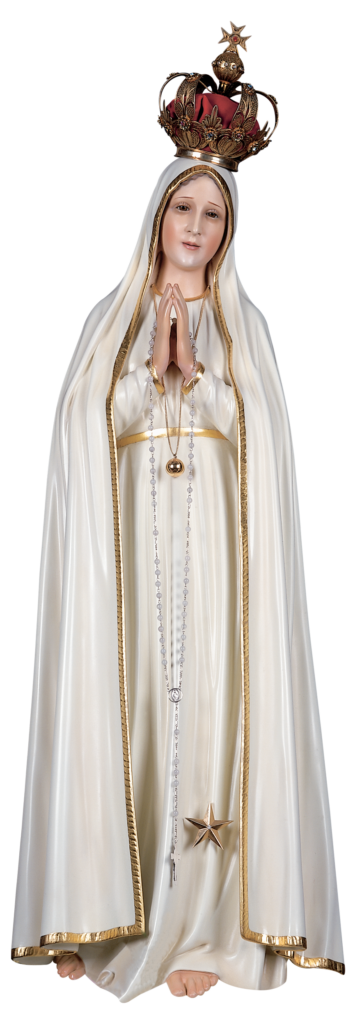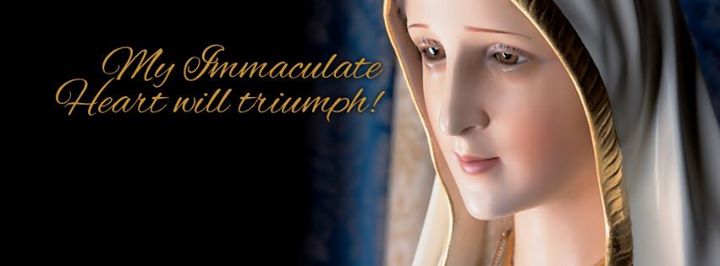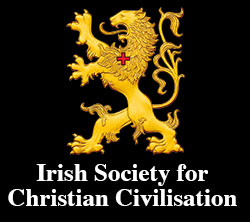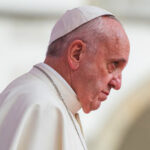In 1917, in Fatima, Our Lady entrusted three Portuguese children with a message that opened horizons of tragedy but also of a sweet hope contained in the promise of the triumph of her Immaculate Heart. Plinio Corrêa de Oliveira discovered the message of Fatima only many years later, finding in it the echo of the profound desire that had come to his heart from afar: the aspiration of St Louis Marie Grignion de Montfort and of all the souls who for centuries had desired and prophesied the “Reign of Mary”.
In the first days of April 1945, while the Second World War was reaching its tragic epilogue, Dr Plinio, in Legionário, raised his eyes to Mary seeing in the apparitions of Fatima the most important and significant event of the century

“‘De Maria numquam satis’. ‘De Fatima numquam satis’ one could say. Fatima is not only an event that happened in Portugal, and is not only of interest in our days. Fatima is a new mark in the very History of the Church. Fatima is, whether they like it or not, the real dawn of the new era, whose early lights broke over the battlefields….”
“When the earth was in confusion” he wrote in Catolicismo in 1952 “the heavens opened and the Virgin appeared at Fatima to tell men the truth. An austere truth, one of reprimand and penance, but one rich in promises of salvation. The miracle of Fatima almost repeated itself at the close of this sad and shameful year of confusion, in the eyes of the Vicar of Christ, to bear witness to the fact that the threats of God continue to hover over men, but that the protection of the Virgin will never abandon the Church and her true children.”
“The Triumph of the Immaculate Heart of Mary” again he wrote in Catolicismo in 1957 “what can it be other than the Reign of the Most Holy Virgin as foreseen by St Louis Marie Grignion de Montfort? And what can this Reign be other than that era of virtue when humanity, reconciled with God, in the bosom of the Church, will live on earth according to the Law, preparing itself for the glories of Heaven?
” The Message of Fatima consists, as Sister Lucia affirms, in a single secret divided into three different parts. Two of the three parts were revealed by Sister Lucia herself in 1941. The first is the terrible vision of the hell into which the souls of sinners fall; this is contrasted to the mercy of the Immaculate Heart of Mary, the supreme remedy offered by God to mankind for the salvation of souls. The second part of the secret regards the dramatic historical alternative of our time: peace, fruit of the conversion of the world and the fulfilment of the requests of Our Lady, or a terrible punishment that would be brought on mankind if it persevered in the ways of sin. Essential conditions requested by Our Lady to avoid the punishment are the consecration of Russia to her Immaculate Heart and the practice of reparatory Communion on the first Saturday of the month. Implicit in this appeal is the necessity of a conversion, understood above all as a re-Christianisation of society and a remoralisation of its habits.
“If they will listen to my requests, Russia will be converted and there will be peace; otherwise it will spread its errors throughout the world, causing wars and persecutions of the Church; the good will be martyred, the Holy Father will have to suffer, several nations will be annihilated; in the end my Immaculate Heart will triumph. The Holy Father will consecrate Russia to me and the world will be granted a period of peace.”
The reference to Fatima characterised almost every public intervention of Plinio Corrêa de Oliveira. In the introduction to the little volume by Dr Antonio Augusto Borelli Machado, he thus presented Fatima in an overall view:
“The Roman Empire of the West closed with a catastrophe illuminated and analysed by the genius of a great doctor, Saint Augustine. The waning of the Middle Ages was foreseen by the great prophet Saint Vincent Ferrer. The French Revolution was foreseen by another great prophet and teacher, Saint Louis de Montfort. But our times, which seem about to close with a new catastrophe, have an even greater privilege: Our Lady herself came to speak to us.”
“Saint Augustine could only explain for posterity what caused the tragedy he witnessed. Saint Vincent Ferrer and Saint Louis de Montfort laboured in vain to turn aside the tempests — men would not listen to them. Our Lady explained the reasons for the crisis and pointed out the remedy, predicting catastrophes if she were not heeded.”
“From every viewpoint, by the nature of their content as well as the dignity of her who brought them, the revelations of Fatima surpass all other times when Providence has revealed to man the imminence of the great tempests of history.”

“Therefore it can be categorically affirmed, without any fear of being contradicted, that the apparitions of Our Lady and of the Angel of Peace in Fatima constitute the most important and exciting event of the twentieth century.”





